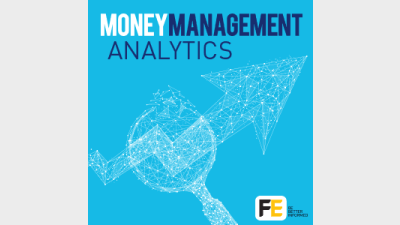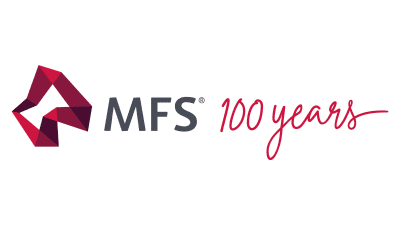Consistent approach makes for stable returns



Simon Doyle, head of fixed income and multi asset at Schroders is the face behind the Schroder Balanced Fund – W Class which took home another trophy in the multi sector category at this year’s Money Management/Lonsec Fund Manager of the Year Awards. For Schroders, which held the title of overall fund manager at the awards four years in a row between 2009 and 2012, a mix of stability and consistency has always yielded the recipe of success.
According to FE Analytics, the growth of the wholesale Schroder Balanced Fund has been on a steady climb for the past 12 months and recorded an annualised return of 2.57 per cent in the 12 months to May 2017. Annualised returns of 6.62 per cent and 9.97 per cent respectively over the past three and five year measured periods saw the fund hold out its performance position in the top 25 per cent across the one, three and five year annualised periods.
According to Doyle, the investor sentiment headlining the 2017-2018 financial year reflects the consistency the fund has produced.
“Some people would probably categorise me as being conservative – I don’t tend to see it that way, valuations matter, they tell us about future returns, they tell us about risk and most of my investors worry more about losing money than about where they perform in the peer group,” he said.
“When risks are arising, we do tend to reduce risk a bit early which appears to be defensive, but sometimes that’s actually quite aggressive positioning given the tendencies of markets to roll on.”
The fund, which has a minimum investment amount of $20,000 for an initial investment and $5,000 minimum for additional investments, has total retail/wholesale funds under management (FUM) of $820 million and total FUM of $1.02 billion. When it comes to holding that valuation afloat, Doyle said the wider market space had faced significant challenges over the past 12 months thanks to market reaction to the last US and UK elections; while the Schroder balanced fund would take a slightly conservative approach to meet this, Doyle said funds that had performed the best over the last four quarters would soon be back on a slippery slope.
“Strategies that will have performed the best of the past 12 months are likely to be those which are inherently more exposed to those markets,” he said.
“As that scene plays out you get a lot more volatility whereas we have less embedded risk asset exposure and we are probably a bit more tactical in how we approach it.
“You’ll see those funds that are at the top probably drop back quite dramatically.”
For Doyle, a properly constructed balanced fund needed the ability to perform well across a diverse economic environment and strike the right balance between security selection, strategic asset allocation, and tactical asset allocation. With the fund’s performance ahead of the sector average for the last three quarters, the focus for Schroders now remained an adherence to strategy.
“Seeing markets going up and not having as much risk in our portfolio as some of the other funds was problematic and the biggest issue for us is our framework tells us risk assets are expensive,” he said.
“There’s no real risk premium in US equities, yet investors aren’t buying that because the economic backdrop still looks ok, inflation is low, central banks are still quite supportive and there’s momentum in the market so trying to navigate that tussle between extended valuations, which tell us risk is high, and that sort of momentum and liquidity which is continuing to play out has been a challenge.
“You can’t just be good at asset allocation or good at stock selection, you’ve got to have good components to invest in and you’ve got to be good at bringing them together.”
To keep results consistent, the fund, which currently sits within the top 25 per cent against 171 funds compared by FE Analytics annualised over a three-year period, has maintained its investment approach and steered clear of Australia’s challenging property markets. Doyle said there was “no hard and fast rule” on updating the strategic approach the fund takes in its allocations, which last changed in 2015.
“We’re not a high turnover manager so the stocks rotate but the broad thematics within our portfolios tend to move a bit more slowly,” he said.
“If you’re looking at performance and you’re not doing as well as you need to and you decide you should take more risk, that’s a very dangerous strategy. For us, it’s focus very much on process and what’s our analysis telling us.
“It’s very hard to be right in markets in the short run, but a lot of what we look at tends to play out over the medium-term.”
Doyle said good tactical asset allocation aligned with a comparable security selection offset risk in portfolio creation and aligned the fund’s success to the strong performance of domestic equities.
“Security selection from out Australian equity team has been very strong and they have significantly outperformed and that’s a large part of our exposure so that’s made a contribution,” he said.
“From an asset allocation perspective, we’ve been underweight for the REIT sector, we haven’t owned an A-REITS and that’s been quite a negative performer so if you look at the last 12 month period, it’s really been those two things in combination – good tactical allocation and a solid contribution from security selection that has come together.”
Commenting on Schroders competitors within the fund class, Doyle said comparing apples with apples was always a challenge.
“You’ve always got to be a little bit careful because particularly in the multi-sector space, there’s a lot of different approaches,” he said.
“Some will be more structurally weighted to domestic assets, some structurally more exposed to bonds, some will have a lot more unlisted type assets.
“In any given environment, a particular manager with a particular style or a particular bias can do well but environments change and having a process that is robust enough to adapt to different environments and therefore can deliver consistently is actually quite hard to achieve.”
Given the current wave of baby boomers entering retirement and an investment landscape fraught with the yet-to-be determined results of multiple policy changes across the financial services landscape in Australia, Doyle was confident the fund had more solid results ahead of it.
“Currency markets have seen moves, the Australian dollar has had a pretty strong bounce, it’s quite overvalued here so foreign currency exposure against the Australian dollar is also something we’re looking at,” he said.
“Some of the things we’ve been avoiding like the Australian property trust market and A-REITS have had a significant fall in price and are starting to look better value…so we’re starting to get a bit interested there.”
In terms of sector performance, Doyle said the achievement of in-house targets would remain frontal.
“In terms of total returns numbers are going to come down across the board because when you look at equity markets they look pretty fully priced and if those valuations are anything to go by that’s fairly low return for equites and also given where bond yield are you’re likely to get low returns from bonds,” he said.
“We don’t sit here looking at the performance tables trying to claw our way up or down, good investors have a set of beliefs, they have a set of processes that align with those beliefs, and the focus is on how to implement and make decisions around that and the execution, decision marking and implementation, not the outcome.
“If you’re just relying on big asset allocations, positions or market timing, you’ll be right some of the time but you’re just as likely to be first quartile as you are fourth quartiles.”
|
FACT BOX: SCHRODERS BALANCE FUND WHOLESALE CLASS Year manager was founded- Financial services has been a core business in Australia since 1961. Number of Employees - 95 Key Personnel
Investment style used (for the Schroder Balanced Fund)
Philosophy based on the idea that understanding, managing and allocating risk is as important to meeting our investment objectives as is our understanding and allocation to sources of return. While accepting risk is necessary in order to lift returns over time, investors often take more risk than they need to achieve their goals. A properly constructed balanced fund should be a fund that will perform well across diverse economic and market environments (not just in rising equity markets). The Fund's investment process incorporates strategic asset allocation; tactical asset allocation; security selection and portfolio construction.
Asset Classes covered: Multi-Asset
Leading Funds:
Total Retail/Wholesale FUM $820,656,189 Total FUM $1,026,061,981 Firm FUM: $43,999,181,411
|
Recommended for you
In the latest edition of Ahead of the Curve in partnership with MFS Investment Management, senior managing director Benoit Anne explores the benefits of adding global bonds to a portfolio.
While M&A has ramped up nationwide, three advice heads have explored Western Australia’s emergence as a region of interest among medium-sized firms vying for growth opportunities in an increasingly competitive market.
Private wealth firm Escala Partners is seeking to become a leading player in the Australian advice landscape, helped by backing from US player Focus Financial.
In this new series in partnership with MFS Investment Management, delve into all things fixed income and discover how you can use the asset class to build better client portfolios. In this Q&A discussion, MFS managing director- head of wholesale distribution James Langlands sits down with Evidentia senior asset consultant Ron Mehmet to discuss fund selection.










